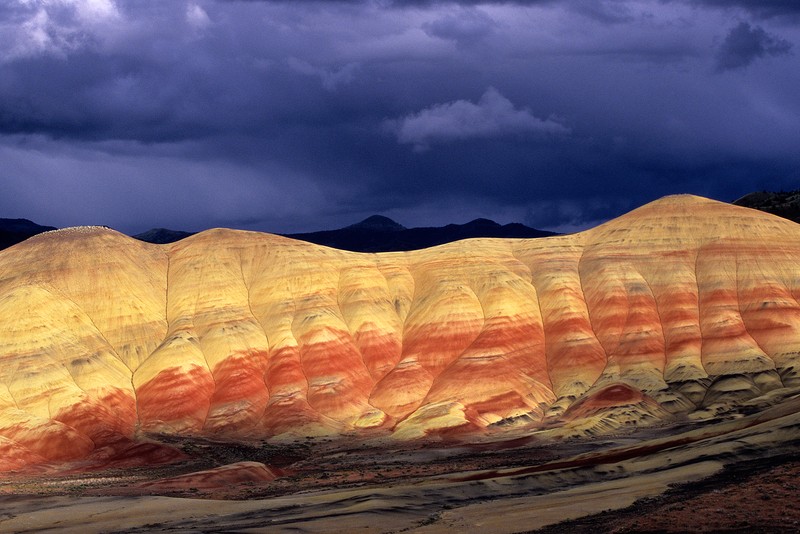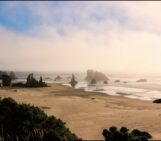The geological record preserved at John Day Fossil beds, in Oregon, USA, is very special. Rarely can you study a continuous succession through changing climates quite like you can at this National Park in the USA. It is a treasure trove of some 60,000 plant and animal fossil specimens that were preserved over a period of 40 million years during the Cenozoic era (which began 66 million years ago).
The geography of Oregon 45 million years ago was significantly different to present. The region received a whopping 1350 mm of annual rainfall (compare this to the approximate annual rainfall in London of 500 mm or 300 mm in Madrid) as the Cascades Mountain range had not yet formed, meaning moisture from the Pacific was not blocked. In addition, the climate was much warmer and Oregon was primarily subtropical, dominated by broad-leaved evergreen subtropical forests.
Then, 12 million years later temperatures began to lower and the climate changed from subtropical to temperate. Deciduous forests became abundant at low altitudes, whilst at higher altitudes coniferous forests dominated the landscape. Imagine a setting not dissimilar to the present day eastern USA. There were a number of active volcanic centres in the area at the time and ash, lava, and volcanic mudflows frequently spread over the region. The volcanicity culminated over a period of 11 million years during which the Columbia River Basalt Group, an extensive large igneous province, was emplaced. The current landscape was shaped during the most recent Ice Age as glaciers from the Cascade Mountains eroded their way towards the low lying terrain in central Oregon.
Photographs don’t really come any more dramatic than this one. “The conditions were prefect; I was very lucky”, says Daniele Penna, who photographed the striking Painted Hills Unit within the National Park , “I visited the area right after a storm, when the sky was partially clearing, leaving space for some light that contrasted with the remaining dark clouds in the background. The combination of atmospheric conditions made me enjoy this stunning place even more and gave me the opportunity to capture several striking images.”
During his PhD in hydrology, Daniele spent a few months at the Oregon State University, in 2007. He took the advantage of his time there by exploring the diverse natural beauties that Oregon boasts.
If, like Daniele, you are interested in photography he has some top tips for achieving a photograph as remarkable as this week’s Imaggeo On Mondays image: “Switching from a wide angle to a moderate telephoto lens can give free rein to the photographer’s creativity in playing with the colors, juxtaposed intersecting lines and interlacing forms. An extremely vivid image emerges as a result of the contrast of light and dark, yellow and red colours, and the contrasting curved and straight lines at Painted Hills. The best time for capturing images that make an impact is reserved for the late afternoon in summer and during late spring when the local park ranger service provides information over the telephone on which species are in bloom.”
Imaggeo is the EGU’s open access geosciences image repository. Photos uploaded to Imaggeo can be used by scientists, the press and the public provided the original author is credited. Photographers also retain full rights of use, as Imaggeo images are licensed and distributed by the EGU under a Creative Commons licence. You can submit your photos here.


